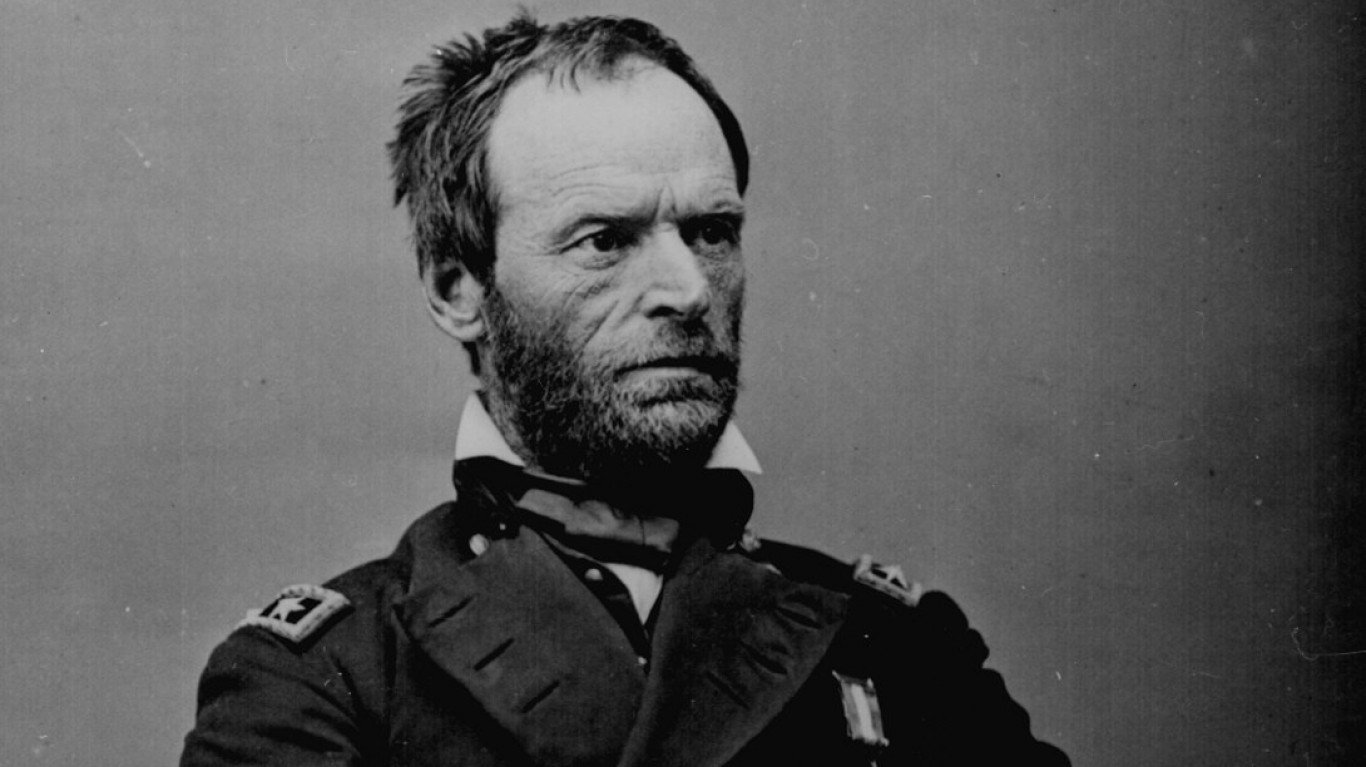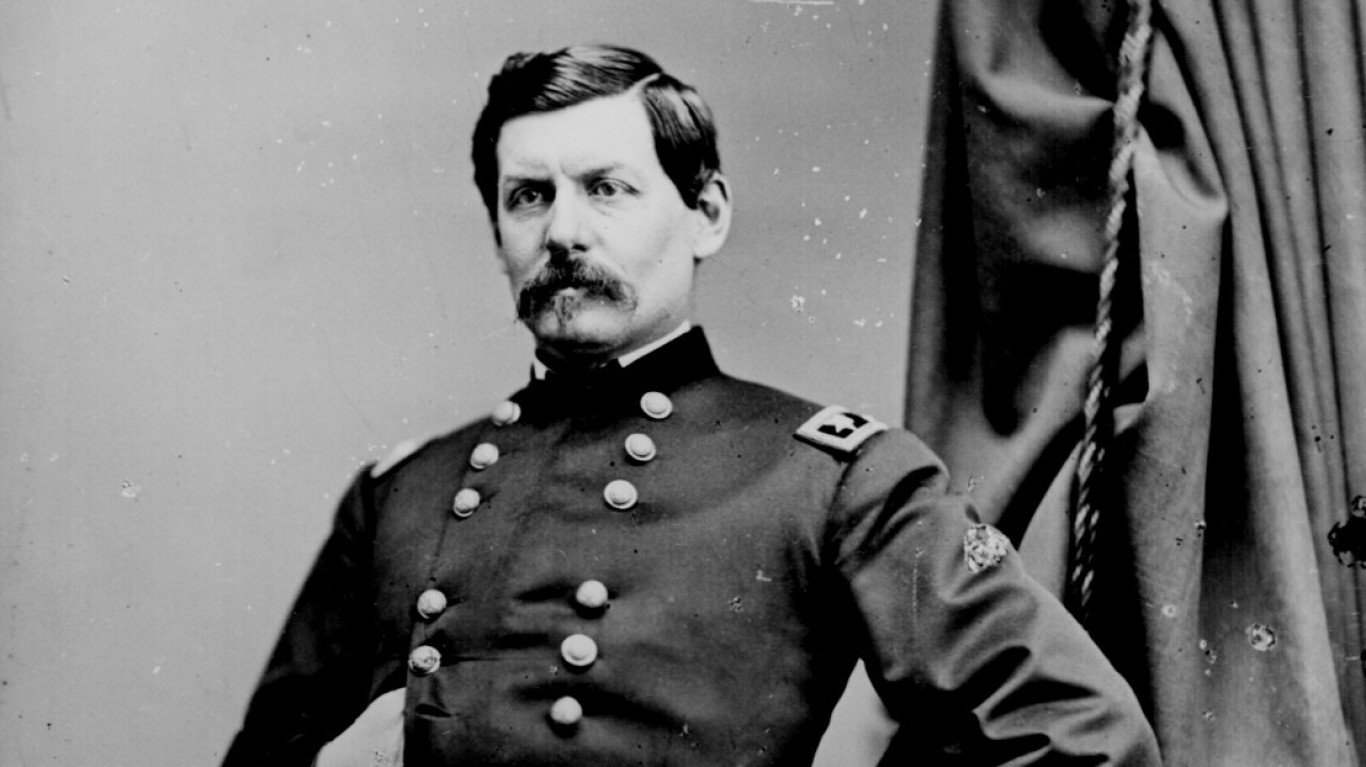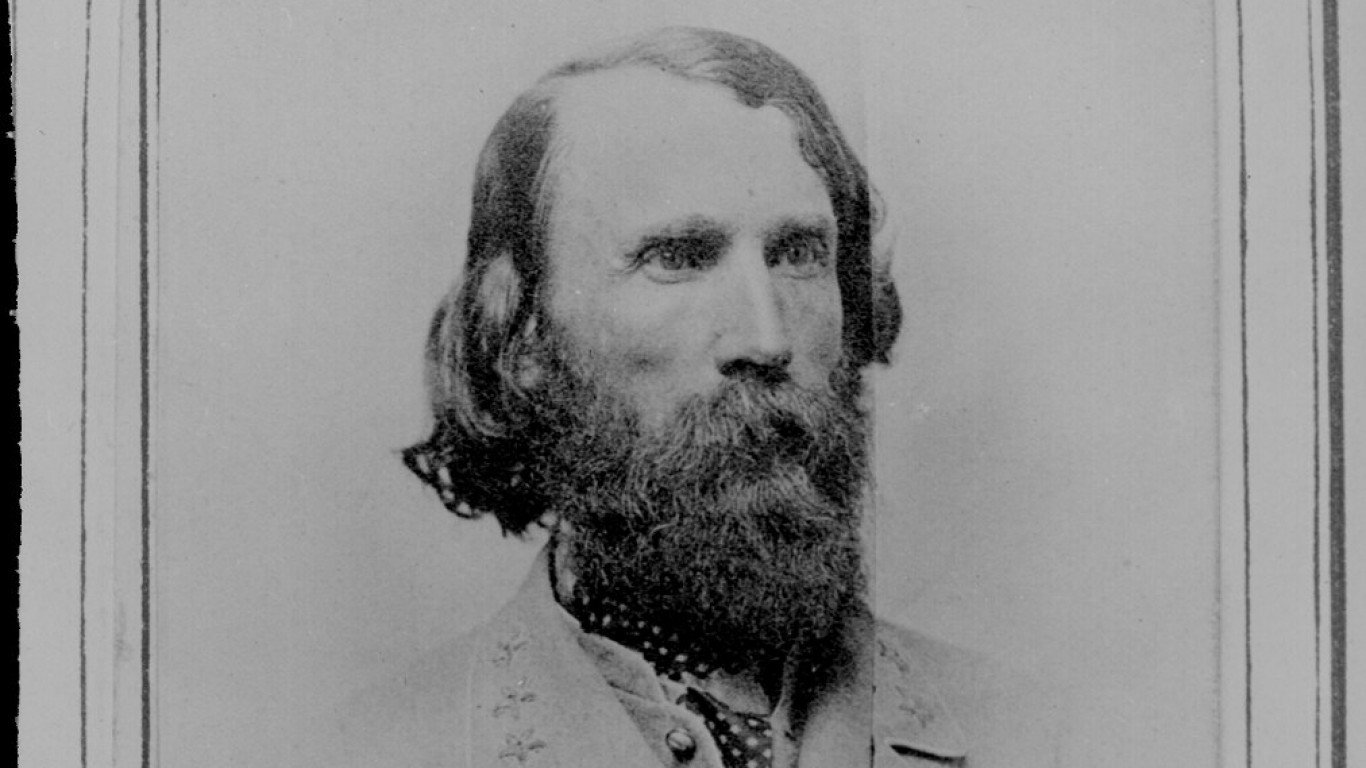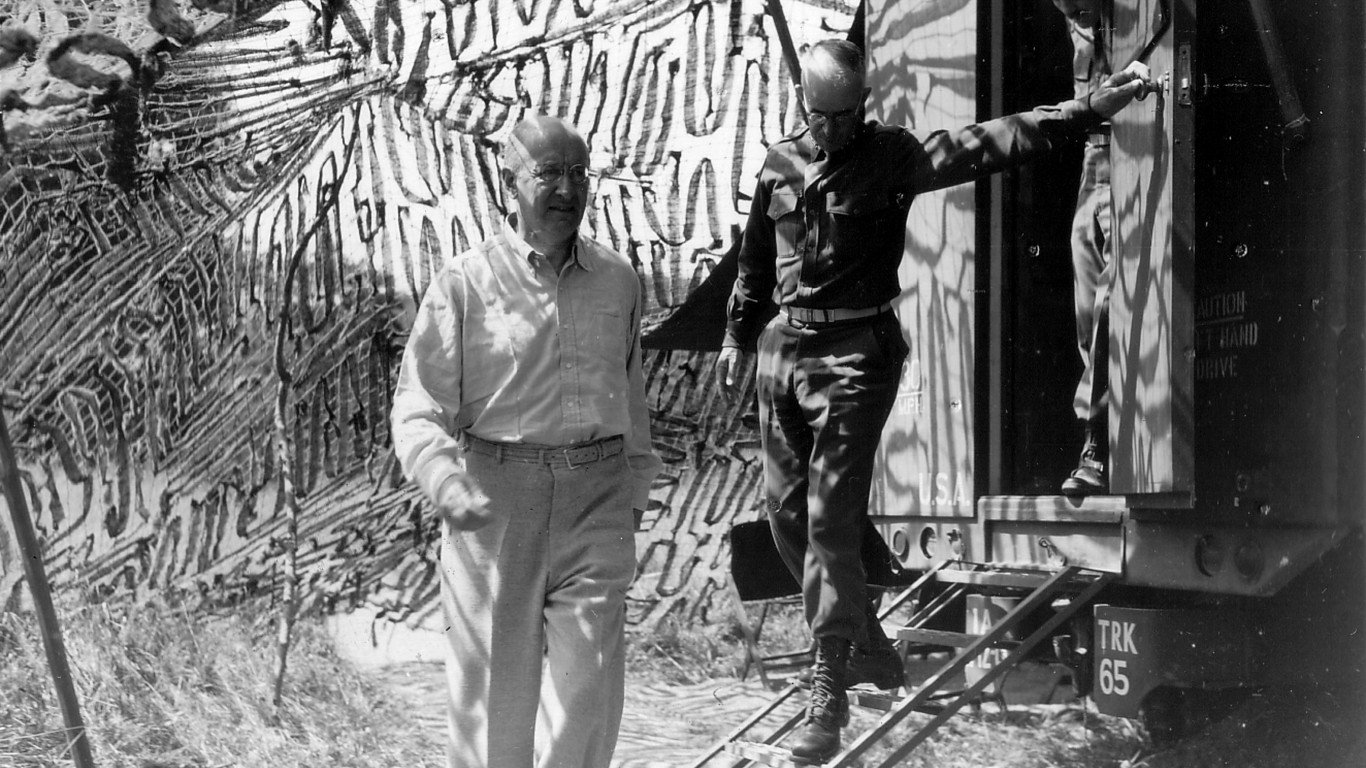The United States Military Academy was founded in 1802 at West Point, New York, a place chosen for its strategic importance because it overlooks the Hudson River. The academy is one of the oldest such institutions in the world and has produced some of America’s most famous leaders.
To identify some of West Point’s most famous graduates, 24/7 Tempo reviewed the list of 72 notable graduates curated by the U.S. Military Academy. The academy considered former presidents, military commanders, Rhodes Scholars, recipients of Hertz Foundation fellowships in applied physical science disciplines, and cadets who went on to be awarded a Marshall Scholarship to attend a British university. We focused on the 31 who commanded armies in major wars, achieved the highest government positions, or performed the greatest acts of heroism.
Though our list contains some of America’s most famous generals, we’ve also included astronauts and those who have distinguished themselves in government service. The list also includes military leaders who served in the Confederacy, recognized for their tactical skills and bravery, not for the cause they fought for. (These are the greatest generals in American history.)
While each class annually graduates outstanding individuals, some classes have produced more noteworthy leaders than others. For example, the class of 1915, hailed as “the class the stars fell on,” produced 59 generals out of a class of 164 graduates. Two of them, Dwight D. Eisenhower and Omar N. Bradley, attained the rank of five-star general and led American efforts in World War II.
An earlier distinguished class was 1846. Out of this group came the Civil War legends George McClellan, Thomas “Stonewall” Jackson, and George Pickett. Besides Jackson and Pickett, other West Point graduates on the list who joined the Confederate side were Jefferson Davis, Ambrose P. Hill, James E.B. Stuart, and Robert E. Lee.
Graduates Frank Borman, Edward White II, Michael Collins, Andrew Morgan, and Edwin “Buzz” Aldrin made their marks as astronauts, while Alexander Haig served as secretary of state under President Ronald Reagan. (Learn about every time men have landed on the moon.)
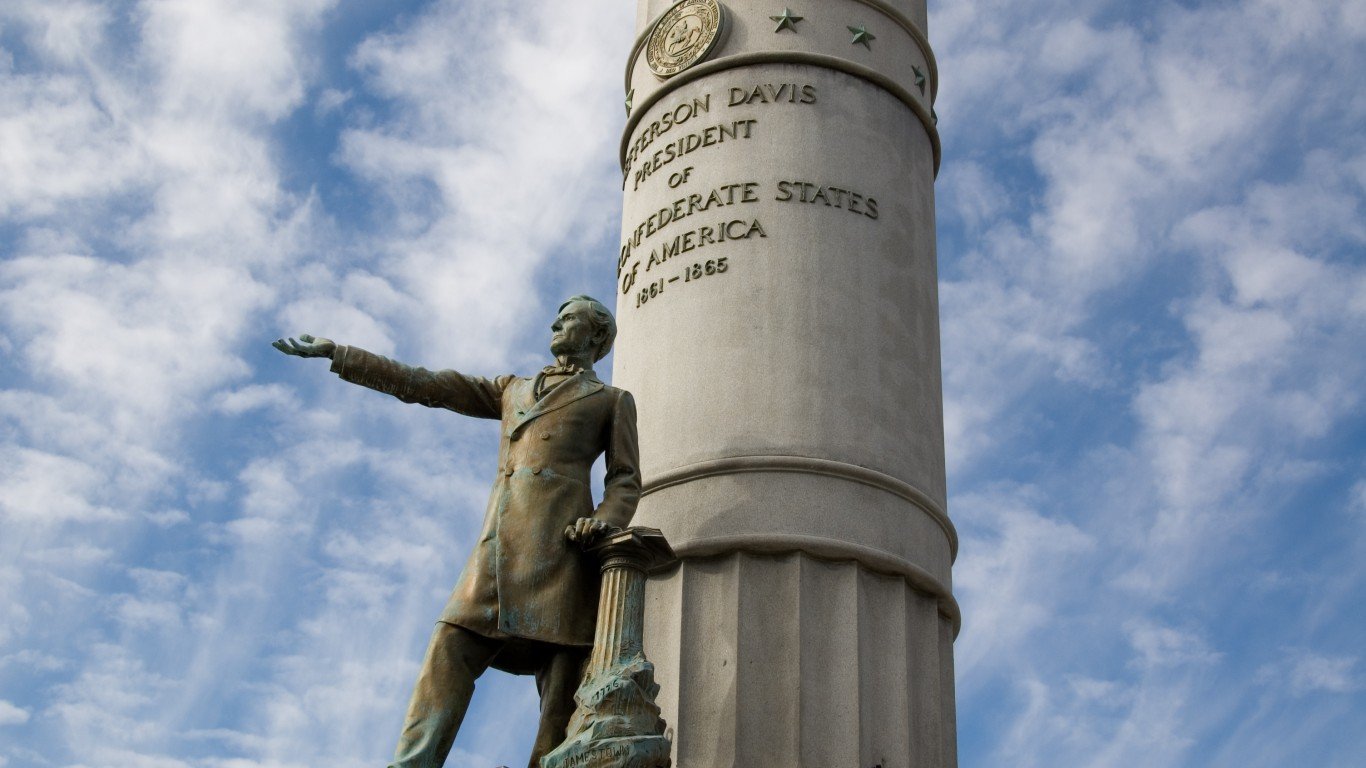
Jefferson Davis
> Class of: 1828
After graduating West Point, Jefferson Davis served in the United Army and became a hero for his exploits at the Battle of Buena Vista during the Mexican-American War, in which he was wounded. He served as a member of Congress and a senator from Mississippi as well as secretary of war before becoming the only president of the Confederacy.
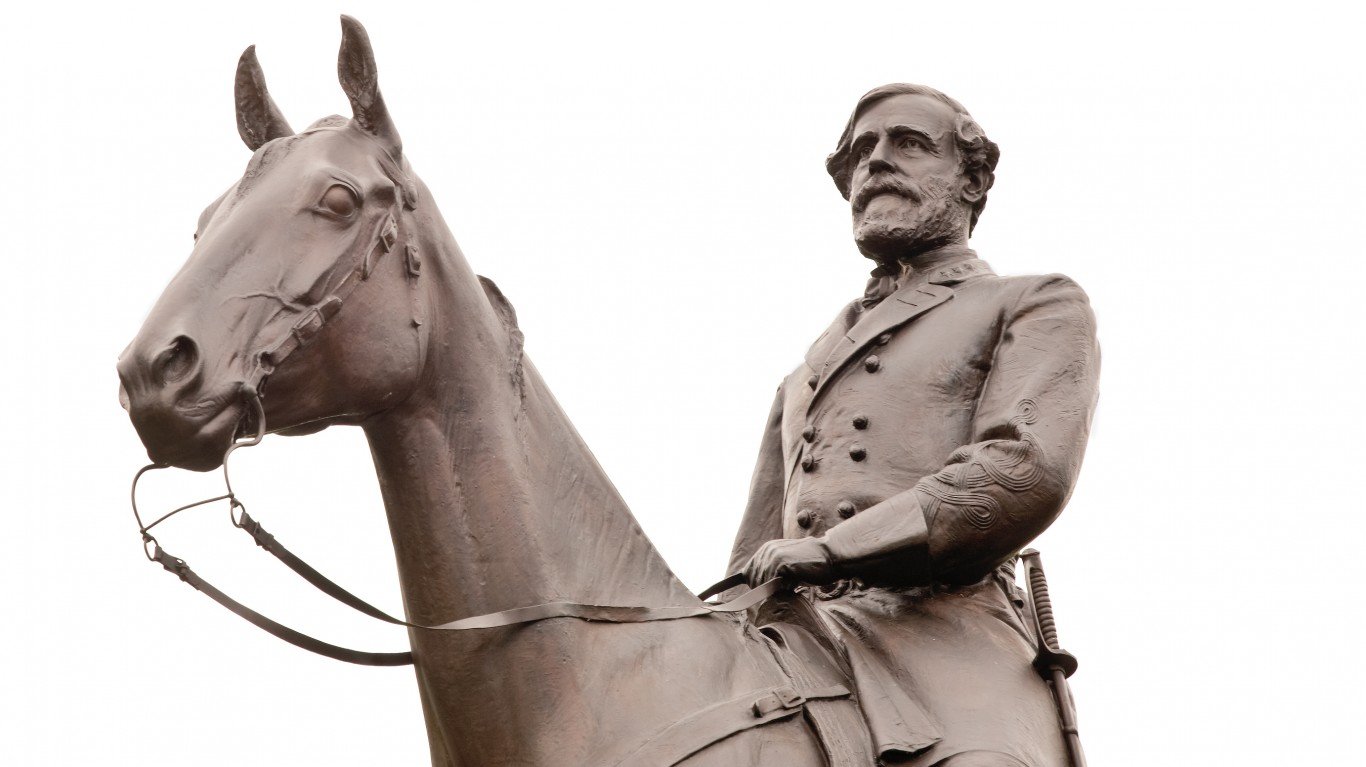
Robert E. Lee
> Class of: 1829
Some historians consider the Confederate Robert E. Lee a military genius for defeating Union armies much larger than his own at Fredericksburg, Chancellorsville, and Cold Harbor during the Civil War, utilizing daring and unconventional tactics. Before the war, Lee fought in the Mexican-American War, served as West Point’s superintendent, and led the assault on Harper’s Ferry that put down abolitionist John Brown’s rebellion.

George G. Meade
> Class of: 1835
George G. Meade became a brigadier general on the Union side at the start of the Civil War and gained combat experience during the Peninsula Campaign under General George B. McClellan. He was wounded during the Seven Days Battles and later fought bravely at Antietam. His greatest moment of glory was as commander of the Army of the Potomac, which defeated Confederate forces at the Battle of Gettysburg.
William Tecumseh Sherman
> Class of: 1840
By leading his army on its famous march to the sea from Atlanta, leaving devastation in his wake, General William Tecumseh Sherman hastened the end of America’s bloodiest conflict, and earned lasting enmity in the South. Before the war, the Ohio-born Sherman spent considerable time in the South. He was stationed in Georgia and South Carolina, fought in the Second Seminole War, and was president of Louisiana State University.
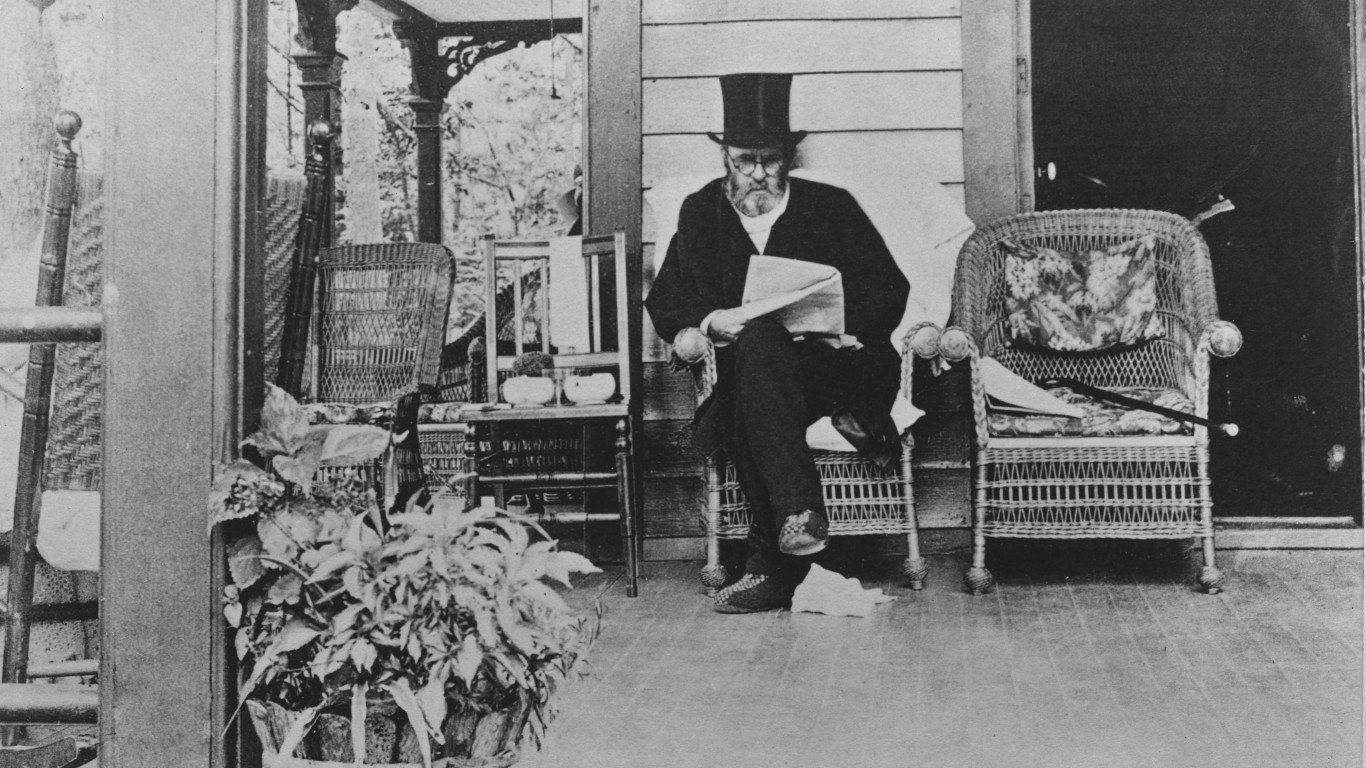
Ulysses S. Grant
> Class of: 1843
Though he was an indifferent student at West Point, Ulysses S. Grant displayed a gift for mathematics and a remarkable visual memory that would serve him well when he studied maps. During the Civil War, his use of attrition to wear down the smaller Confederate armies drew condemnation of him as a butcher. Grant was a skilled tactician, prevailing at the siege of Vicksburg. He eventually became Commanding General of the U.S. Army. His victory in the Appomattox campaign effectively ended the war. Grant would go on to serve two terms as president of the United States and seek reconciliation with the South.
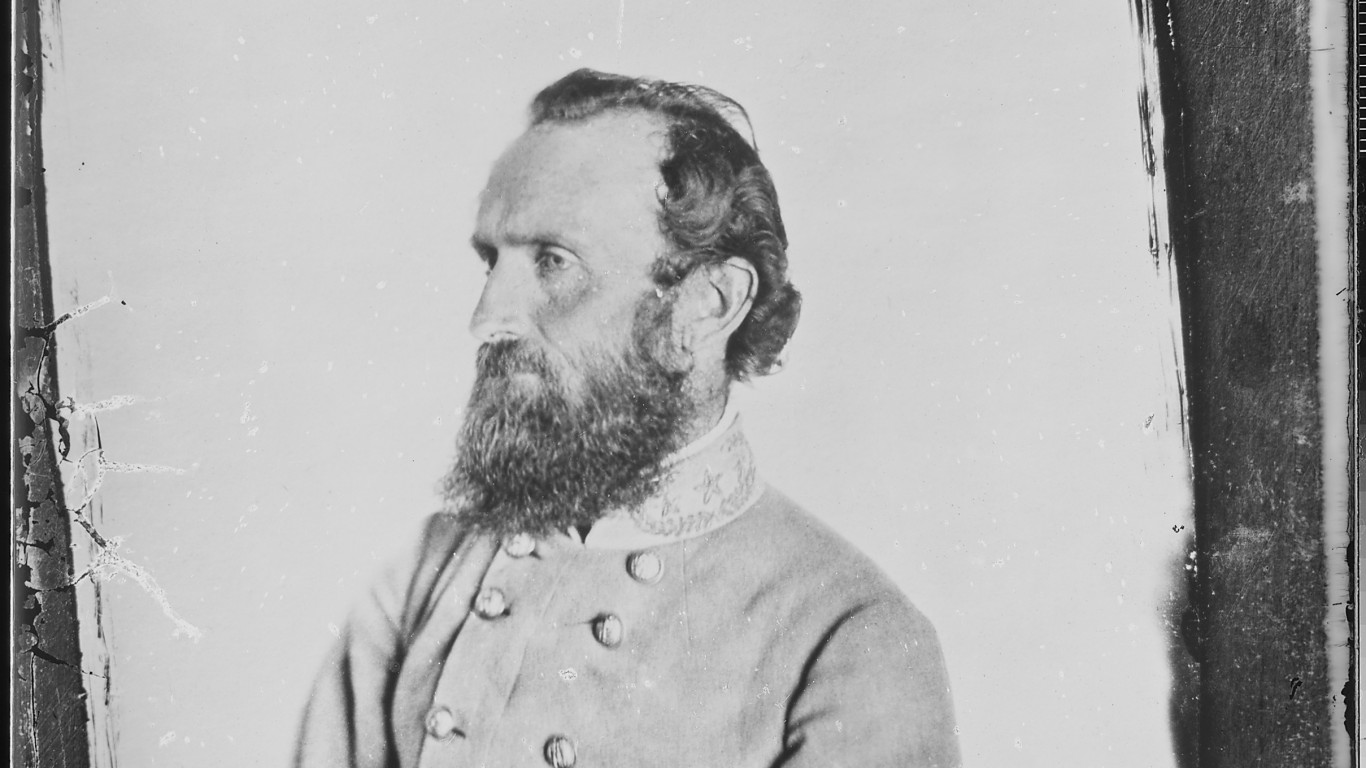
Thomas J. “Stonewall” Jackson
> Class of: 1846
Famed for his tenacity and his devout faith, Thomas J. “Stonewall” Jackson earned his nickname at the First Battle of Bull Run, when he calmly inspired his troops to resist Union forces – causing another Confederate general, Barnard Bee, to tell his men “There is Jackson standing like a stone wall!” – preventing a Confederate defeat. Jackson also fought at the Second Battle of Bull Run and at Antietam and Fredericksburg. His greatest achievement would be his last. At Chancellorsville, a flanking maneuver by Jackson’s troops, conceived by General Robert E. Lee, turned the battle into a rout of Union forces. As the battle broke off, Jackson was seriously wounded by friendly fire and later died from pneumonia.
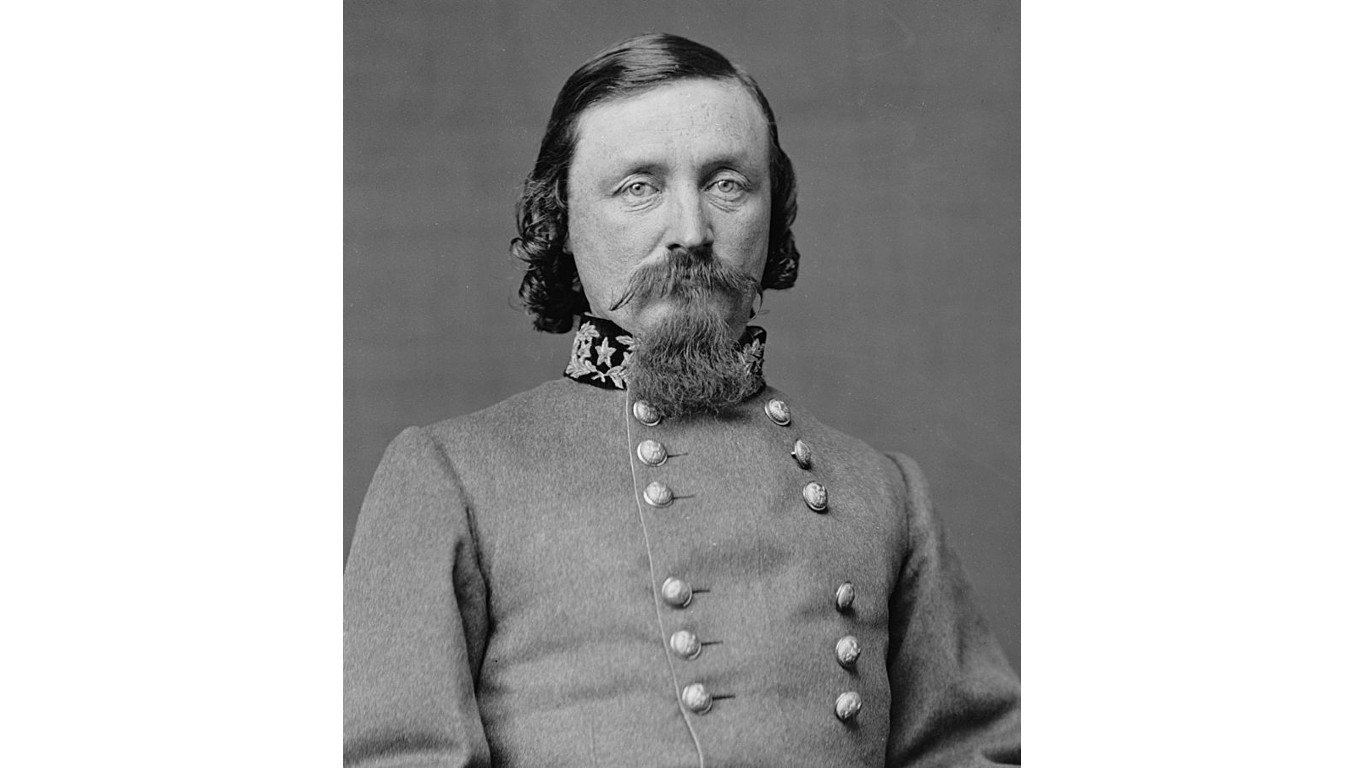
George E. Pickett
> Class of: 1846
George E. Pickett’s name would forever be associated with a doomed charge on the last day of the Battle of Gettysburg. Pickett led more than 4,500 Confederate troops over half a mile of open ground against intense artillery and musket fire. His men made the deepest breach in the Union line but were driven back with horrific losses. It was a turning point in the Civil War. Pickett also served the Confederacy at the siege of Petersburg and the Battle of Five Forks. Fort Pickett, Virginia, was named after him – though there are plans to rename it for a WWII hero, Van Barfoot.
George B. McClellan
> Class of: 1846
Graduating second in his class, George B. McClellan served bravely during the Mexican-American War. McClellan was promoted to major general in the Union army in the first months of the Civil War and won several minor battles, earning the nickname “The Young Napoleon.” McClellan was skilled at drilling and organization and popular with his troops – though not popular with President Abraham Lincoln. The president sacked McClellan for being overcautious, particularly after the Battle of Antietam in Maryland, blaming McClellan for letting Robert E. Lee’s mauled army escape to Virginia. McClellan ran unsuccessfully against Lincoln for president in 1864 and later became governor of New Jersey. Fort McClellan, Alabama, was named in his honor.
Ambrose P. Hill
> Class of: 1847
Ambrose P. Hill and George B. McClellan were roommates at West Point and would face each other on the battlefield at the Seven Days Battles and Antietam. Hill was Confederate colonel at the start of the Civil War and rose quickly to general. He was famous for the rapid movement of his troops, which won him fame at Antietam, when his quick relocation from Harper’s Ferry to the battlefield in Maryland in May 1863 likely saved General Robert E. Lee’s army. Poor health afflicted Hill later in the war and he was killed during the siege of Petersburg, one week before the surrender at Appomattox. Fort A.P. Hill, Virginia, was named for him. An independent commission charged with finding new names for installations named after Confederates has recommended that it be rechristened Fort Walker, after Dr. Mary Edwards Walker, the first army female surgeon, who served during the Civil War.
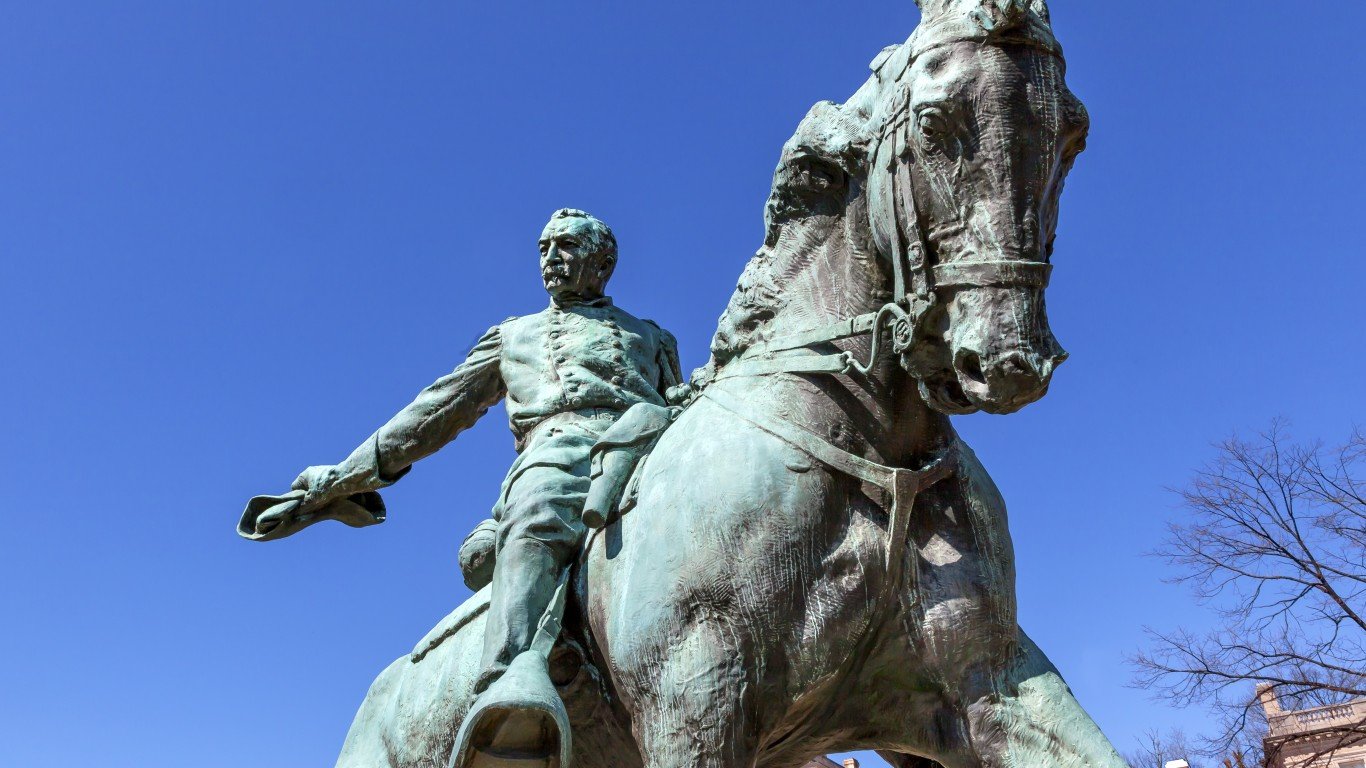
Philip Sheridan
> Class of: 1853
Diminutive in height, but audacious in combat, Philip Sheridan rose quickly to become a major Union general during the Civil War. He was closely associated with General Ulysses S. Grant, who transferred Sheridan from command of an infantry division in the west to lead the cavalry corps of the U.S. Army of the Potomac. Sheridan transformed it from a support role into an aggressive force. In 1864, he defeated Confederate forces in the Shenandoah Valley and conducted an early version of scorched-earth tactics. His cavalry was crucial in forcing Confederate forces to surrender at Appomattox. After the war, Sheridan employed the same total-war strategy in the Indian Wars of the Great Plains. Outside of the battlefield, Sheridan was instrumental in the development and protection of Yellowstone National Park.
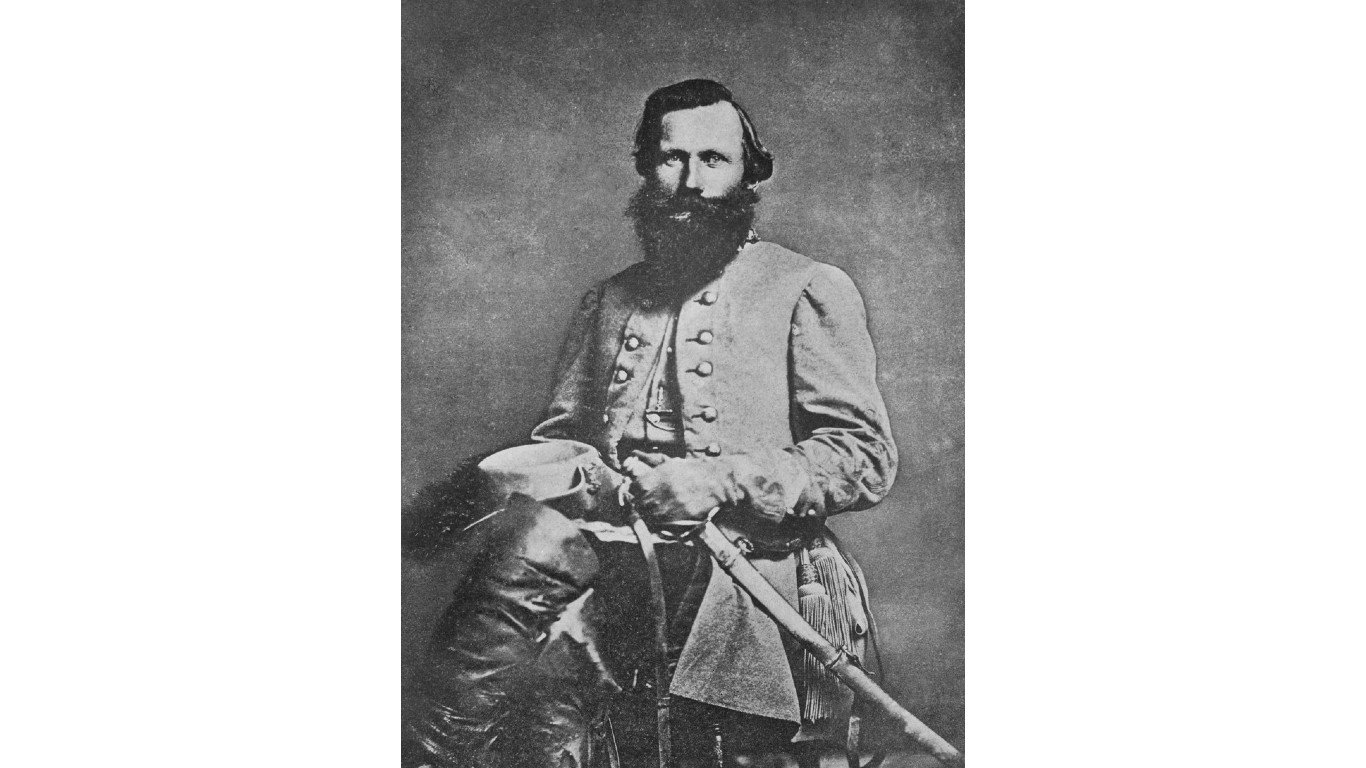
James E. B. Stuart
> Class of: 1854
James E.B. Stuart, was a dashing Confederate Army cavalry officer whose reconnaissance missions circled Union troops twice, capturing supplies and prisoners. Stuart served as the eyes of the rebel army. His screening efforts at the Second Battle of Bull Run by harassing Union troops were key to the Confederate victory. Stuart’s failure to provide adequate intelligence on Union positions at the Battle of Gettysburg, however, was a factor in the South’s defeat. Stuart was killed during the Battle of Yellow Tavern by Union cavalry led by General Philip Sheridan.
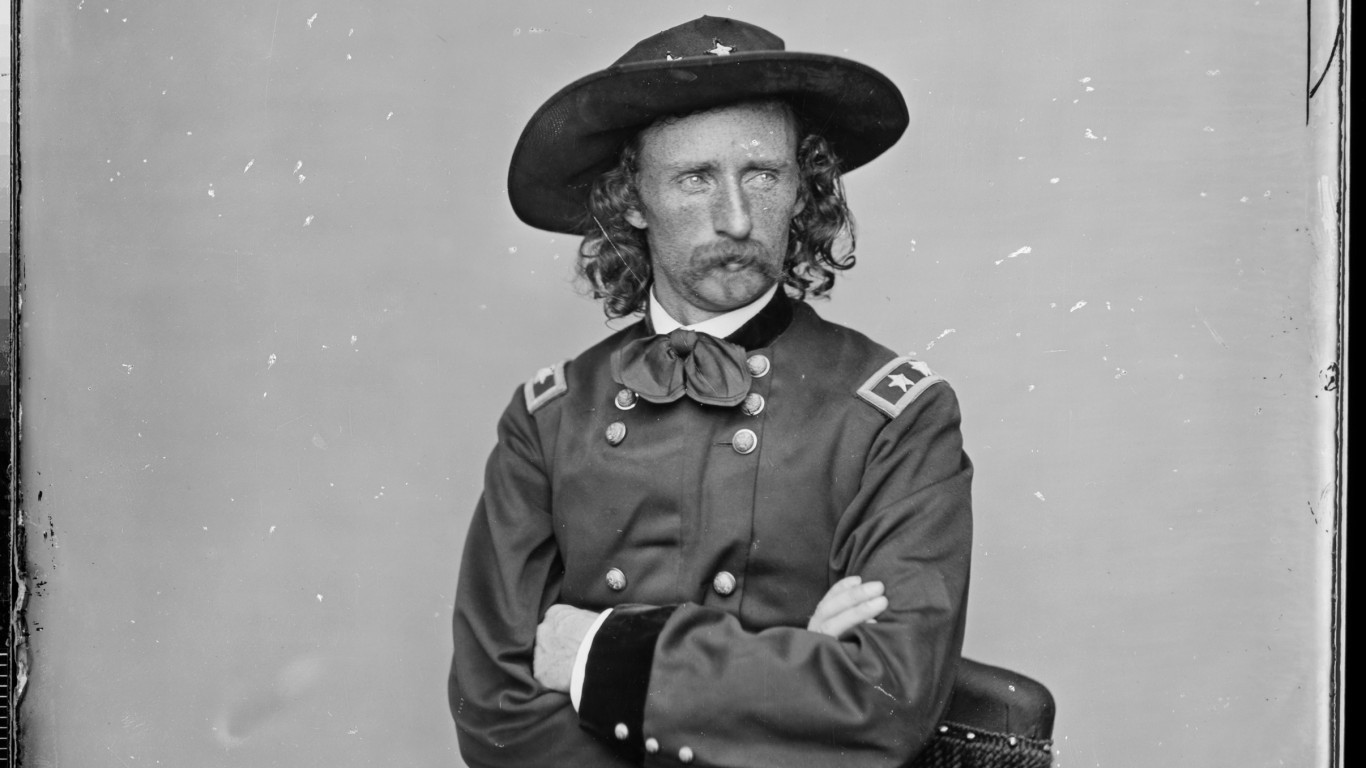
George A. Custer
> Class of: 1861
George A. Custer was a lazy student at West Point, racking up demerits and eventually finishing last in his class. But the U.S. Army needed officers with the Civil War starting, and Custer got an opportunity. He got his baptism of fire at the First Battle of Bull Run and gained a reputation for daring and brilliance in combat. That got the attention of General George B. McClellan, who made him an aide during the Peninsular Campaign. Custer was commissioned a brigadier general at age 23. He gained media fame for his audacious raids that cost the lives of many cavalrymen. After the war, the colorful Custer went west and was put in charge of the ill-fated 7th Cavalry Regiment, which was wiped out by the Lakota Sioux, Cheyenne, and Arapaho tribes at the Battle of Little Big Horn in 1876.
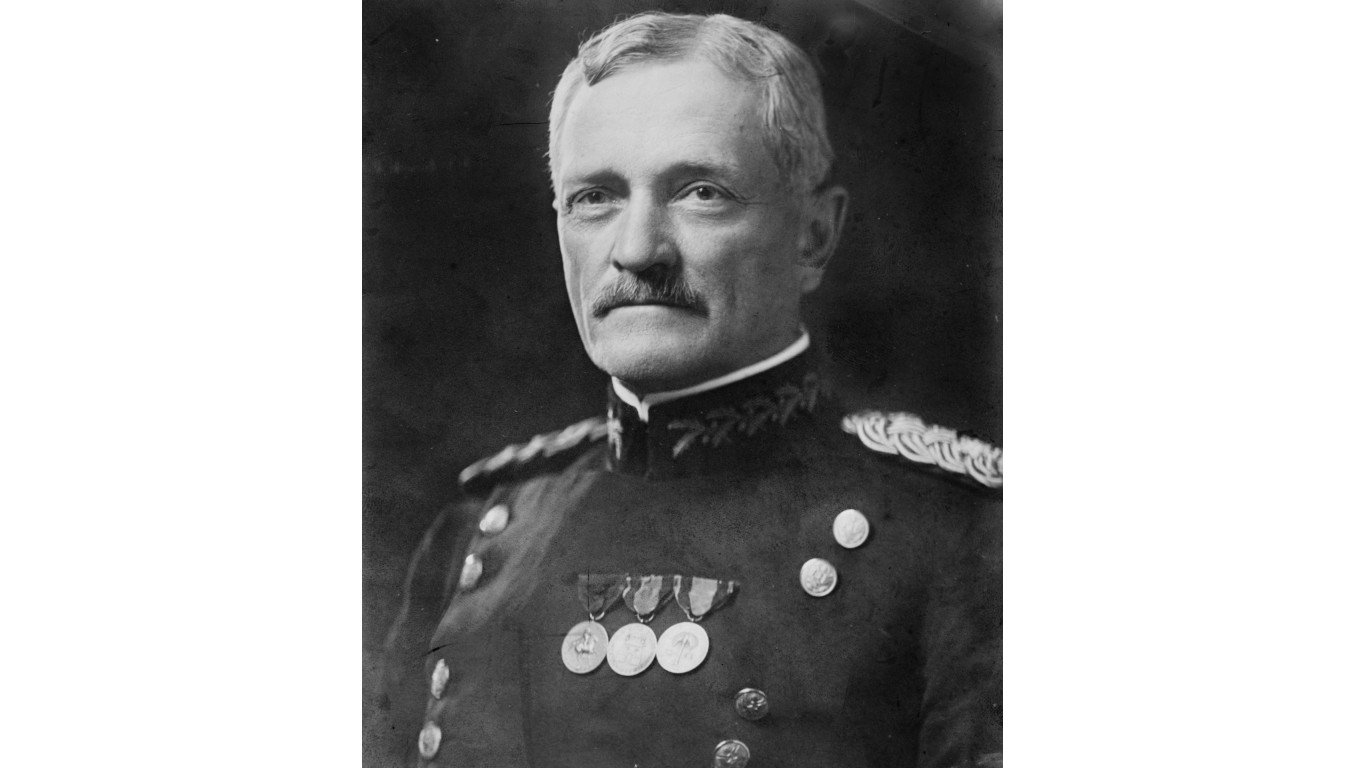
John J. Pershing
> Class of: 1886
John J. Pershing was teaching at a school for African-American students in Missouri when he saw an ad for the U.S. Military Academy at West Point. He applied and was accepted. Pershing spent his early years in the West in campaigns against the Apache and Sioux. He commanded an all-Black regiment in Montana, one of the first white commanders to do so. Pershing served during the Spanish-American War and later led American forces in pursuit of Mexican revolutionary Pancho Villa, who was raiding U.S. border towns. After the U.S. entered WWI, Pershing became commander-in-chief of the American Expeditionary Force that helped the Allies defeat Germany.

Douglas MacArthur
> Class of: 1903
Douglas MacArthur had one of the most distinguished careers in American military history. He graduated first in his class and served in the Army during World War I, and became superintendent of West Point from 1919 to 1922. With World War II looming and the Japanese expanding their empire in the Pacific, MacArthur was named commander of U.S. forces in the Far East. He conducted an island-hopping campaign that rolled back the Japanese empire and ultimately led to victory. He oversaw the occupation of Japan, and then was put in charge of United Nations forces after North Korea invaded South Korea in 1950. MacArthur was recalled by President Harry Truman for insubordination but received a ticker tape parade in New York City upon his return.
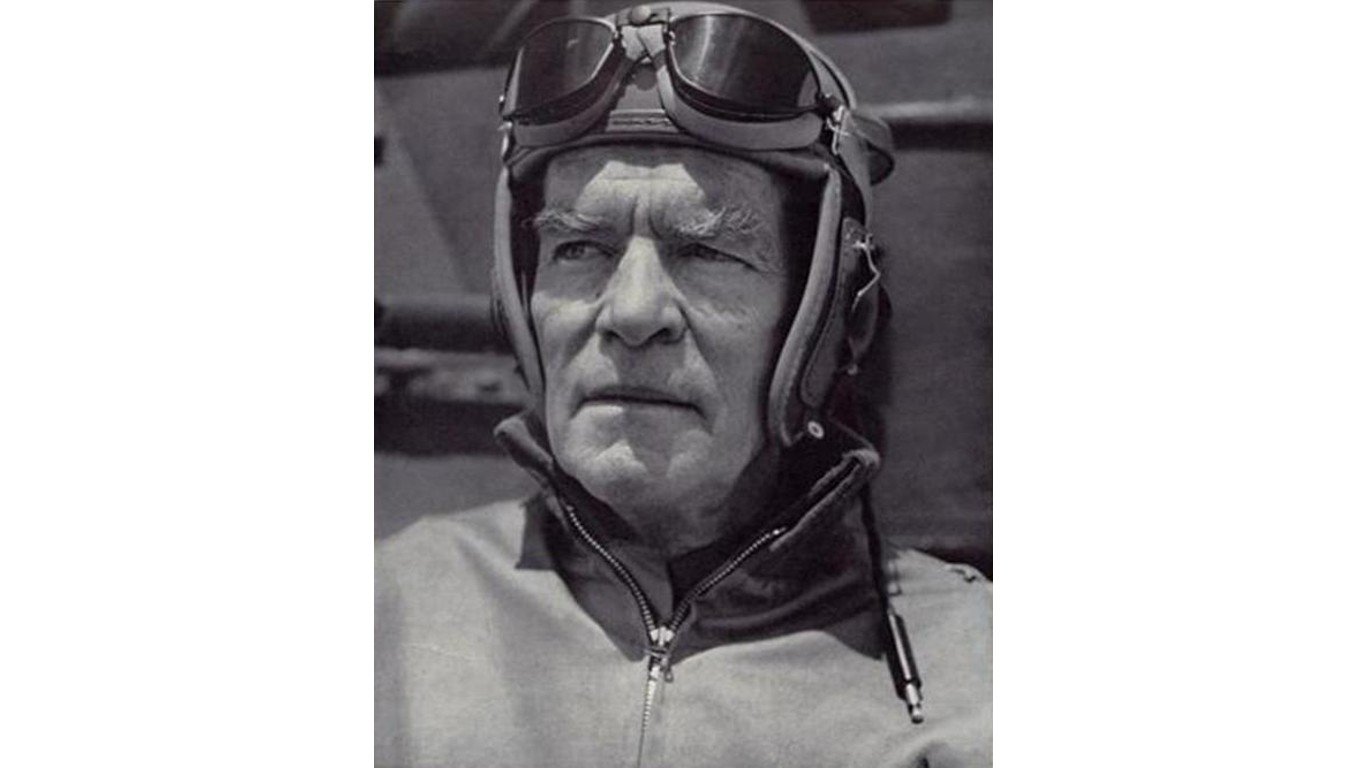
Adna R. Chaffee
> Class of: 1906
When Adna R. Chaffee graduated from West Point in 1906, he was regarded as the academy’s finest horseman. Yet despite his love of cavalry, he saw the future of warfare as mechanized. After serving with the U.S. Army in WWI at the Battles of St. Mihiel and Meuse-Argonne, he developed concepts in armored warfare in the 1920s and predicted it would be how armies fought in the future. The German Blitzkrieg in Poland and Western Europe in World War II would prove him correct.

Henry H. “Hap” Arnold
> Class of: 1907
Another military pioneer was Henry H. “Hap” Arnold. He was personally taught by the Wright Brothers how to fly a plane in 1911, and developed what became the American Air Force. Arnold stood by aviation power advocate Billy Mitchell even as the latter was court-martialed for insubordination, sharing his belief in the strategic potential of air power. Arnold advocated development of the B-17 and B-24 bombers that played a vital role in the Allied bombing campaign over occupied European and Japanese targets in World War II. In 1942, he became commanding general of Army Air Forces and directed missions against Germany and Japan.
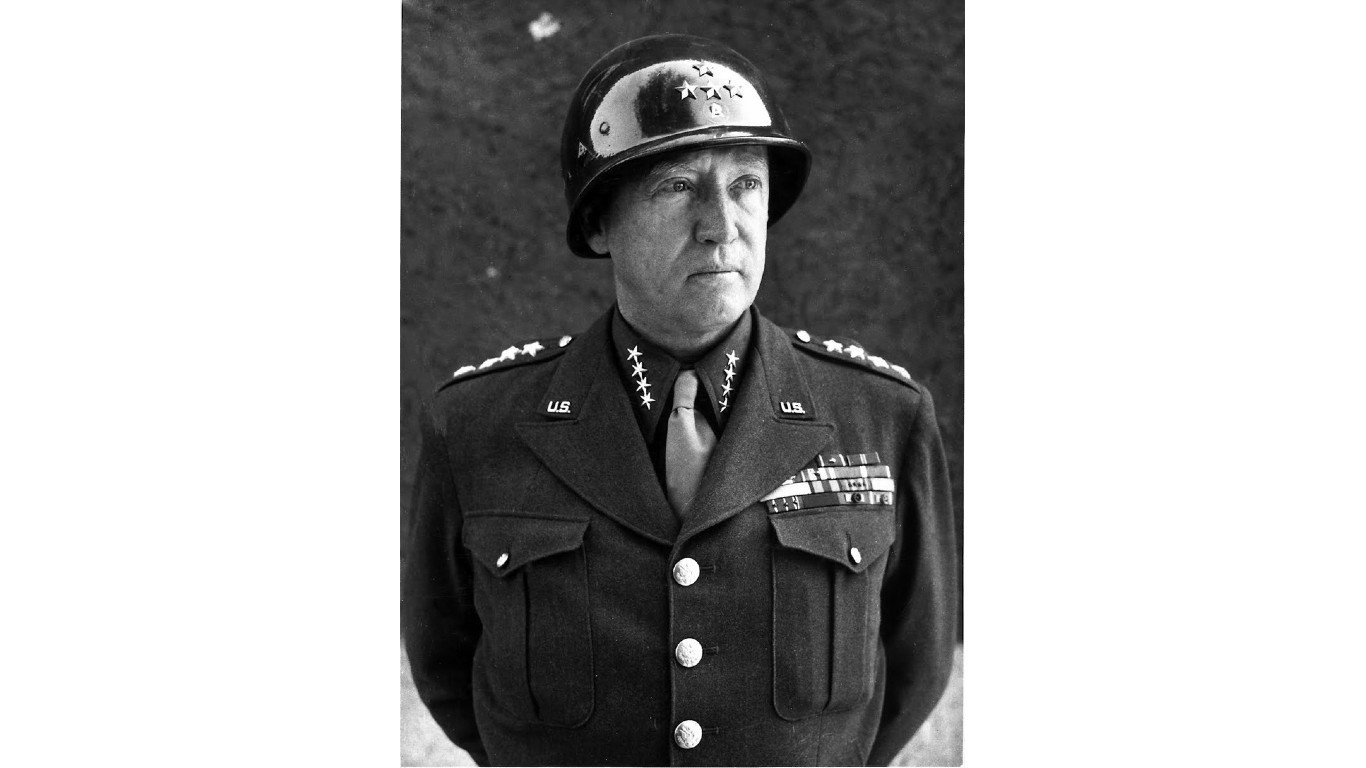
George S. Patton
> Class of: 1909
George S. Patton, the flamboyant general born into a family with a long military tradition, was schooled in tank warfare, and developed the American tank corps during World War I. He later became one of America’s greatest generals during World War II, leading successful campaigns against Axis forces in North Africa and Italy. After the D-Day landing, his Third Army raced across France and then played a key role in relieving beleaguered U.S. troops during the Battle of the Bulge.
Omar N. Bradley
> Class of: 1915
Not as colorful or media-craving as MacArthur or Patton, Omar N. Bradley was a collaborative, humble, and courteous leader who cultivated officer talent and encouraged his subordinates to think creatively. Beloved by those who served under him during World War II, he was nicknamed the “GI General.” Bradley led successful campaigns in North Africa, Sicily, Normandy, the Low Countries, Czechoslovakia, and Germany. He later served as first chairman of the Joint Chiefs of Staff.
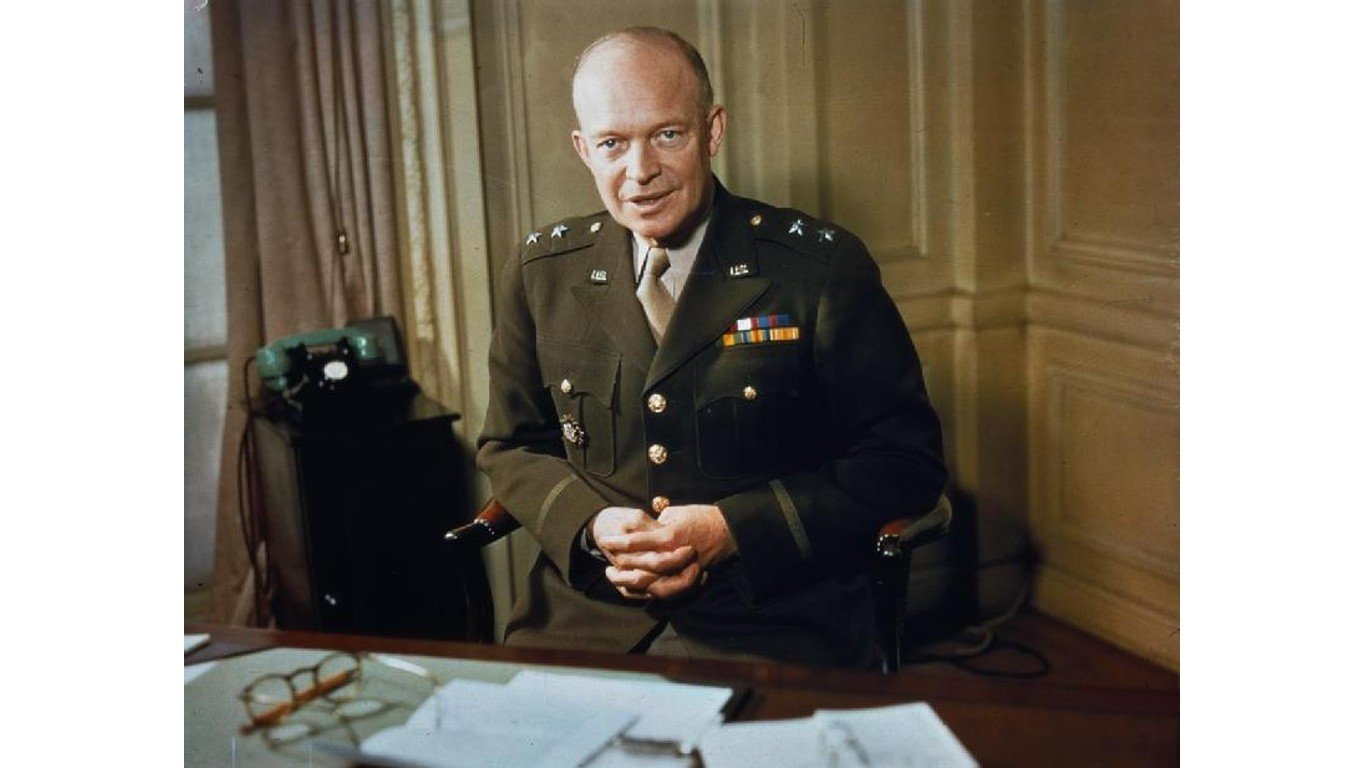
Dwight D. Eisenhower
> Class of: 1915
Dwight D. Eisenhower graduated first in his class of 245 in 1915 and served as an aide to General John J. Pershing during World War I and later General Douglas MacArthur. Eisenhower became Commanding General of the European theater in 1942, and led successful campaigns in North Africa and Italy. He was named Supreme Commander of the Allied Expeditionary Force in Europe, and his diplomatic skill helped rally the coalition of Western Allies to defeat Nazi Germany. Eisenhower’s ability to oversee massive undertakings like the invasion of Normandy and delegate authority to subordinates helped him become the 34th president in 1952, and he went on to serve two terms.
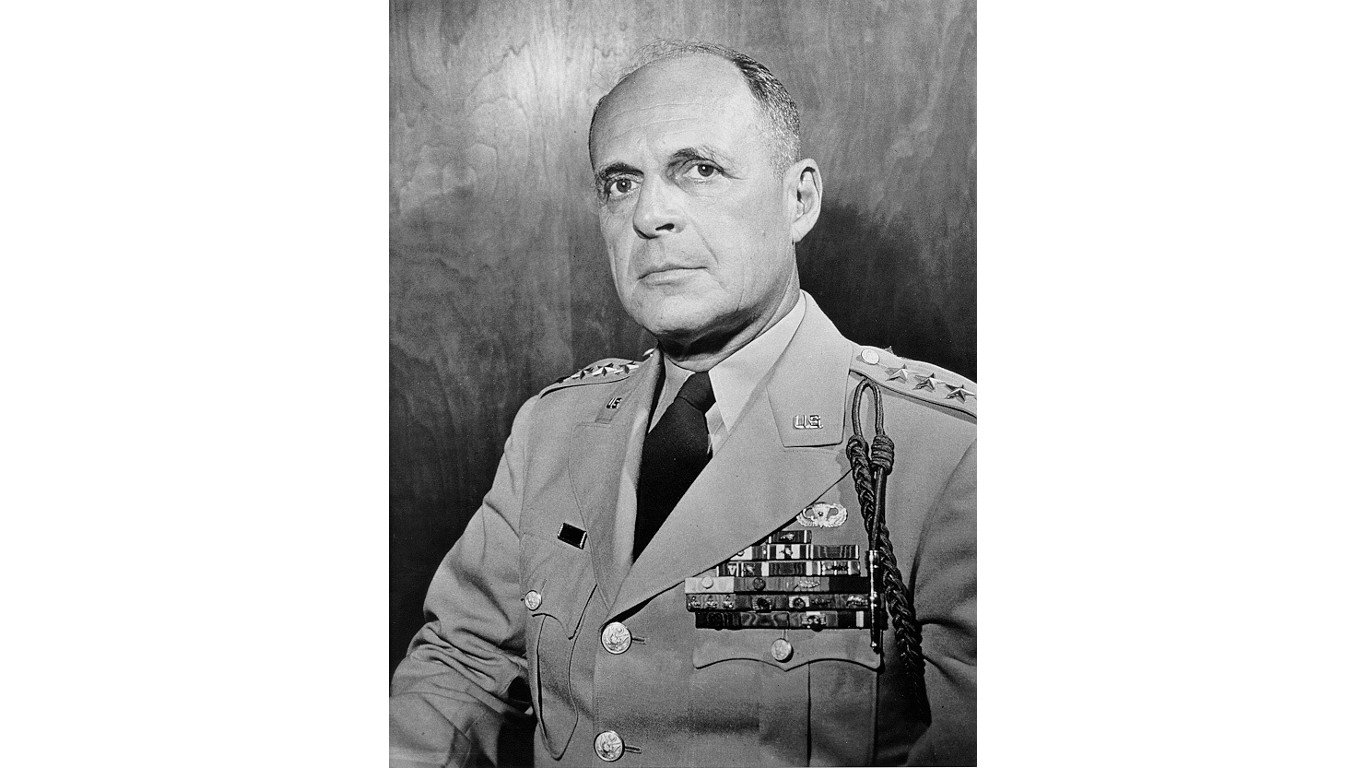
Matthew B. Ridgway
> Class of: 1917
Matthew B. Ridgway, often seen with a hand grenade affixed to his battle jacket, served in a variety of positions during World War II and was known for rallying dispirited troops. He commanded the 82nd Airborne Division and parachuted with them in the invasion of Normandy. He took command of the U.S. Eighth Army during the Korean War and succeeded Douglas MacArthur as Allied Commander in the Far East.
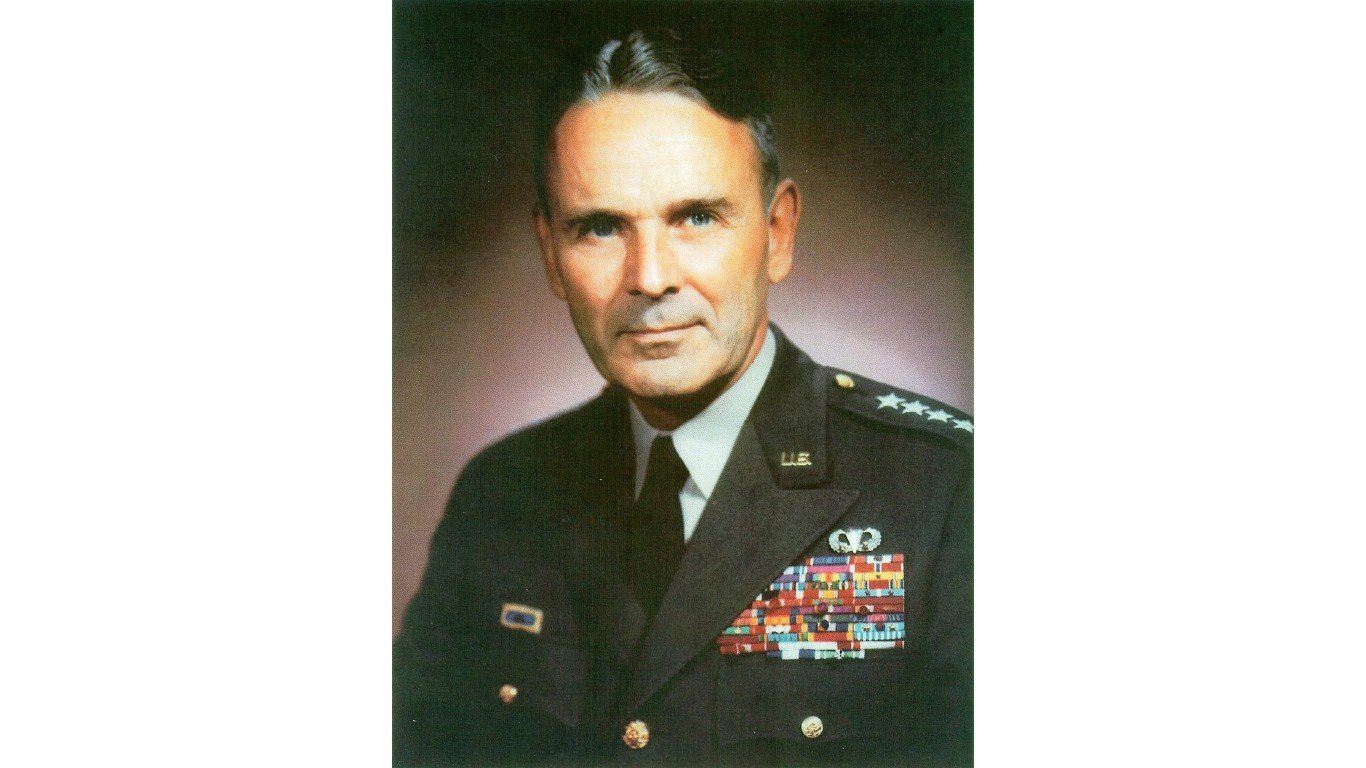
Maxwell D. Taylor
> Class of: 1922
Maxwell D. Taylor led the renowned 101st Airborne Division on D-Day and also during the Battle of the Bulge and the advance through Germany. Taylor had a gift for languages and was known as the thinking man’s soldier. After World War II, he opposed U.S. overdependence on nuclear weapons. Taylor served as chairman of the Joint Chiefs of Staff under President Lyndon B. Johnson, and believed in supporting the government of South Vietnam. In 1964, after leaving the military, Taylor became U.S. ambassador to South Vietnam.
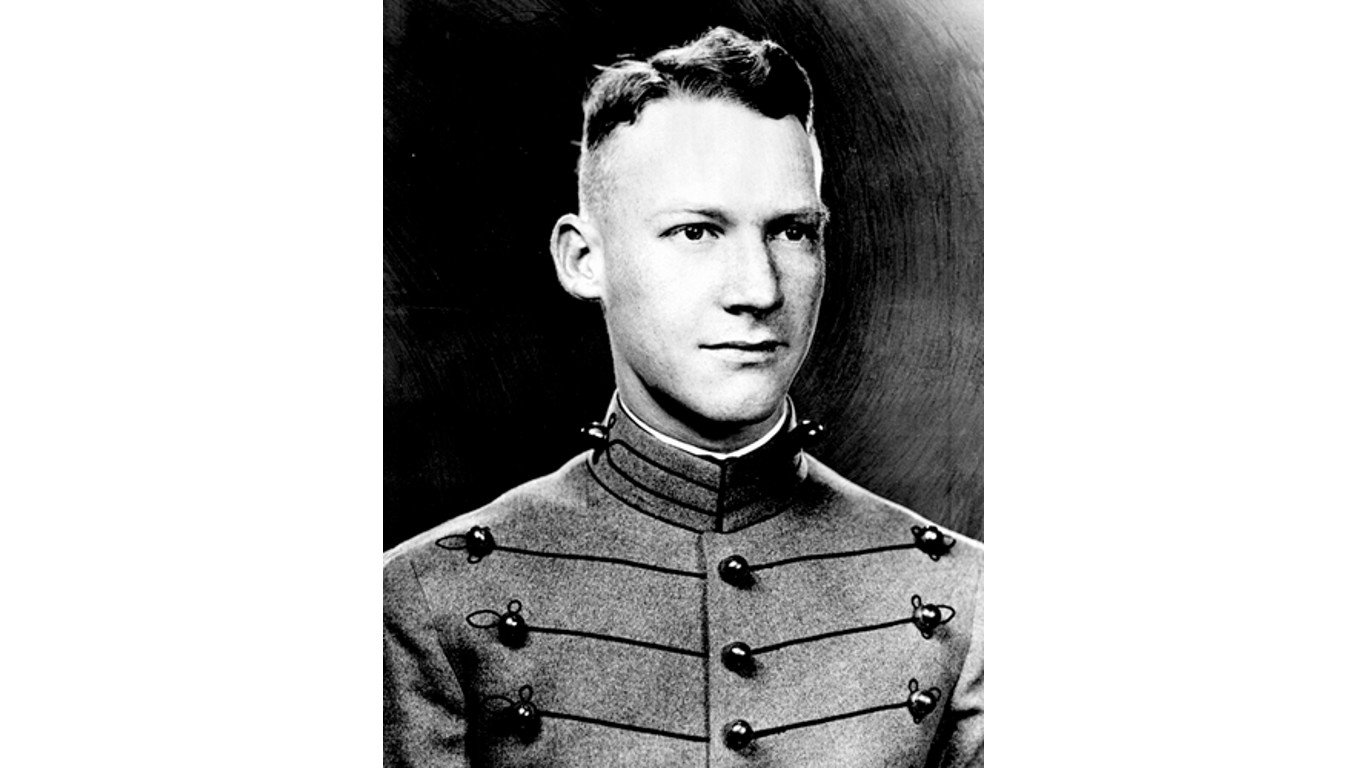
Alexander R. Nininger
> Class of: 1941
Alexander R. “Sandy” Nininger was destined to serve in the military. As a boy visiting family in New York state, he saw a group of West Point cadets march past the house and yearned to attend the academy. He graduated from West Point in 1941 and was soon stationed in the Philippines, just before the Japanese attacked that island country. As American and Filipino troops fell back, Nininger led a counterattack brandishing grenades and a captured Japanese machine gun. He was killed and became the first American to receive the Medal of Honor in World War II.
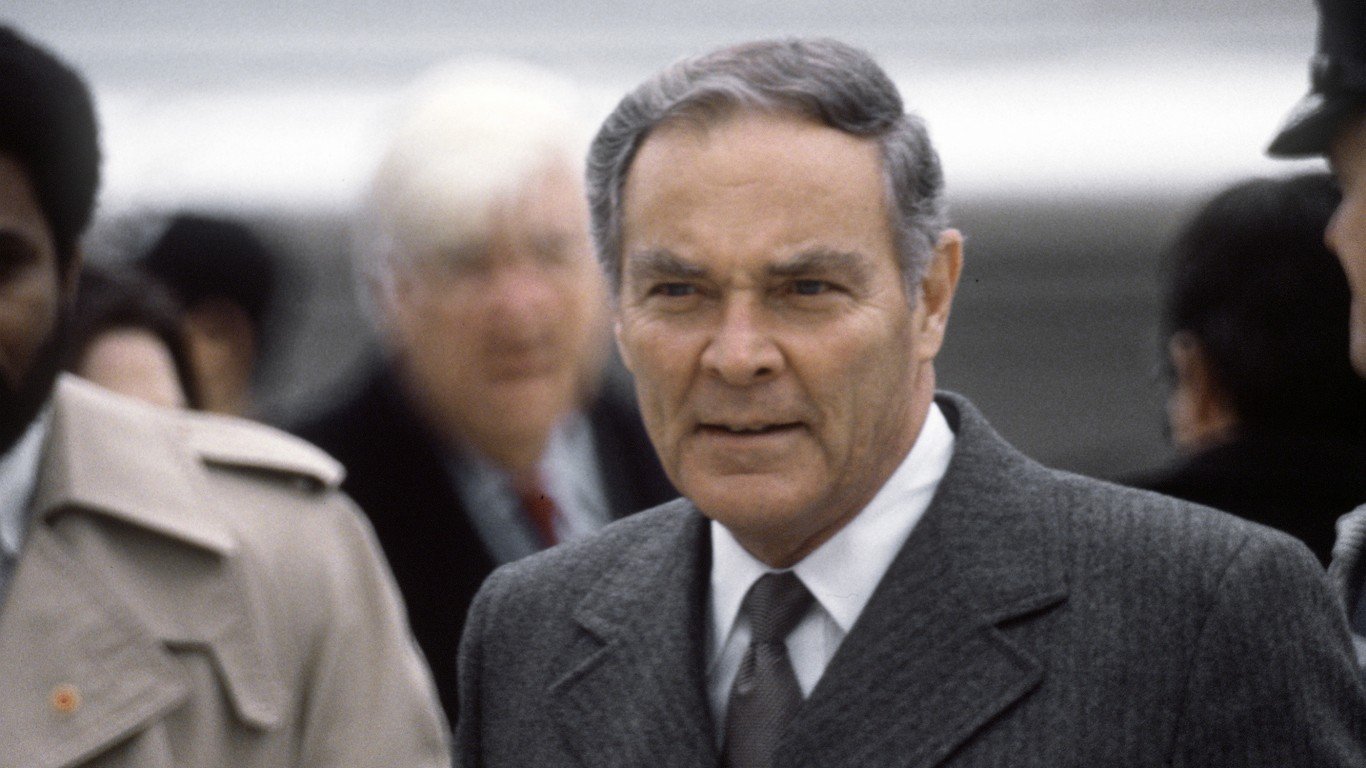
Alexander M. Haig
> Class of: 1947
Alexander M. Haig Jr. saw combat on the battlefield as well with government bureaucracies. He landed with troops during the Battle of Inchon, which reversed the course of the Korean War. Haig worked under Deputy Secretary of Defense Cyrus Vance in 1964 and dealt with interagency politics during crises involving the Dominican Republic and Cuba. Haig also worked with Henry Kissinger during the Nixon administration and played a role in the negotiations involved with Nixon’s resignation. He became Supreme Allied Commander in Europe in 1974, and seven years later joined President Ronald Reagan’s cabinet as Secretary of State. Haig achieved some notoriety in 1981 by announcing “I’m in control here” after Reagan was shot by John Hinkley, Jr., apparently incorrectly believing that he was first in the line of succession when the president was incapacitated.

Frank Borman
> Class of: 1950
Frank Borman was commander of Apollo 8, and along with crew mates James Lovell, Jr. and William Anderswas one of the first people to leave Earth’s orbit, reach the moon, orbit it, and return safely to Earth. The photos they took of the moon and the data they compiled were crucial in preparing the United States for the moon landing the following year. Before the Apollo mission, Borman commanded the 14-day Gemini 7 mission in 1965. He later became president of Eastern Airlines.
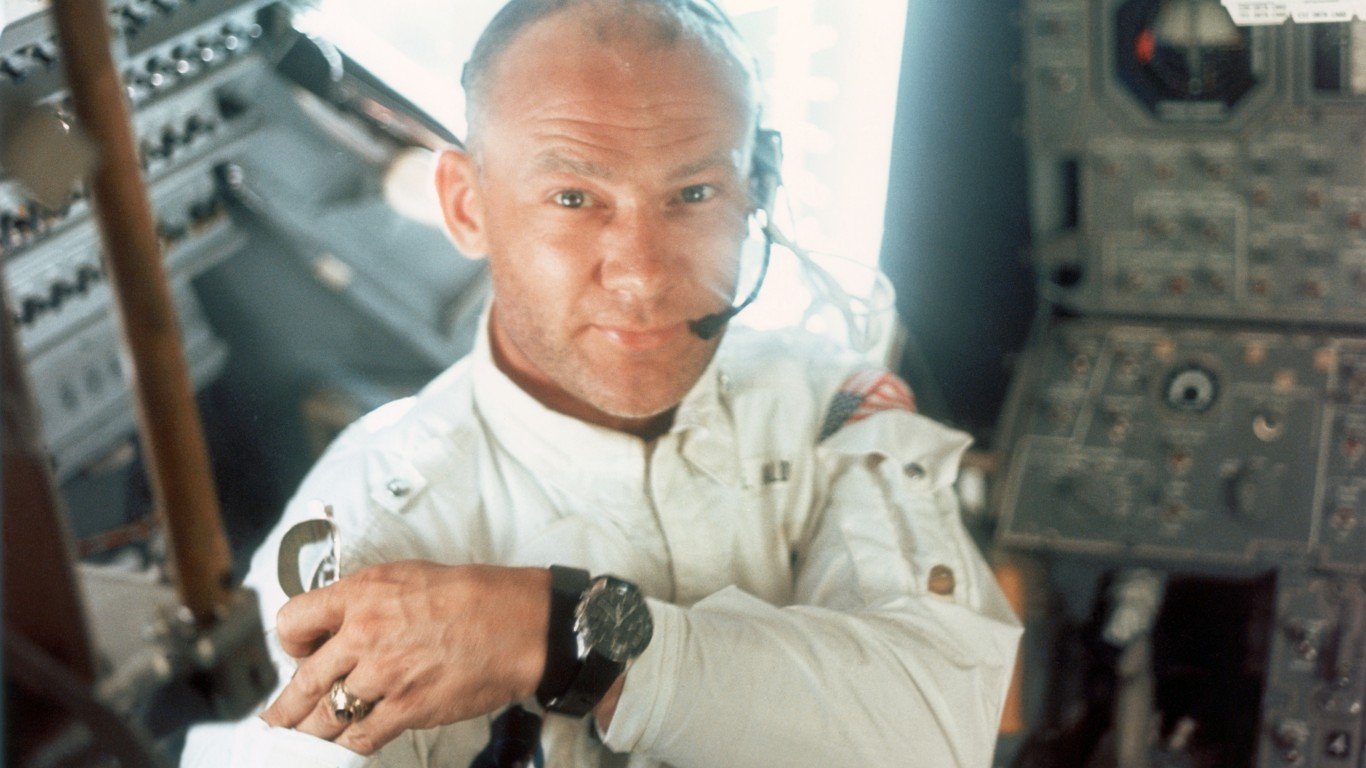
Edwin E. “Buzz” Aldrin
> Class of: 1951
Edwin E. “Buzz” Aldrin gained enduring fame as the second person to walk on the moon. He had problems dealing with the fame that accompanied his accomplishment and battled alcoholism and depression in the years after the lunar landing. Aldrin has written books about his experiences, including his autobiography, “Return to Earth,” and “Men from Earth,” a history of the Apollo program. Aldrin also flew on the Gemini 12 with James Lovell Jr. and performed three walks in space. Before he ever went into space, Aldrin flew 66 combat missions during the Korean War, and shot down two MiG-15 jets.

Roscoe Robinson Jr.
> Class of: 1951
Roscoe Robinson Jr. became the American army’s first African-American four-star general in 1982. Robinson was decorated for valor during the Korean War and commanded the Second Battalion, Seventh Cavalry, First Air Cavalry Division in Vietnam, became Commanding General of the U.S. Army in Japan from 1980 to 1982, and served as Commanding General of the famed 82nd Airborne Division in 1976-78.

Edward White II
> Class of: 1952
Edward White II became the first American to walk in space in 1965, spending 23 minutes outside during the Gemini 4 capsule during the second piloted Gemini mission. White’s space-traveling career would end tragically on Jan. 27, 1967. During a simulation aboard the Apollo spacecraft on the launchpad at Kennedy Space Center in Florida, a flash fire ignited in the pure oxygen atmosphere of the capsule, killing White and fellow astronauts Gus Grissom and Roger Chaffee. It was the first fatal accident directly attributed to the U.S. space program.
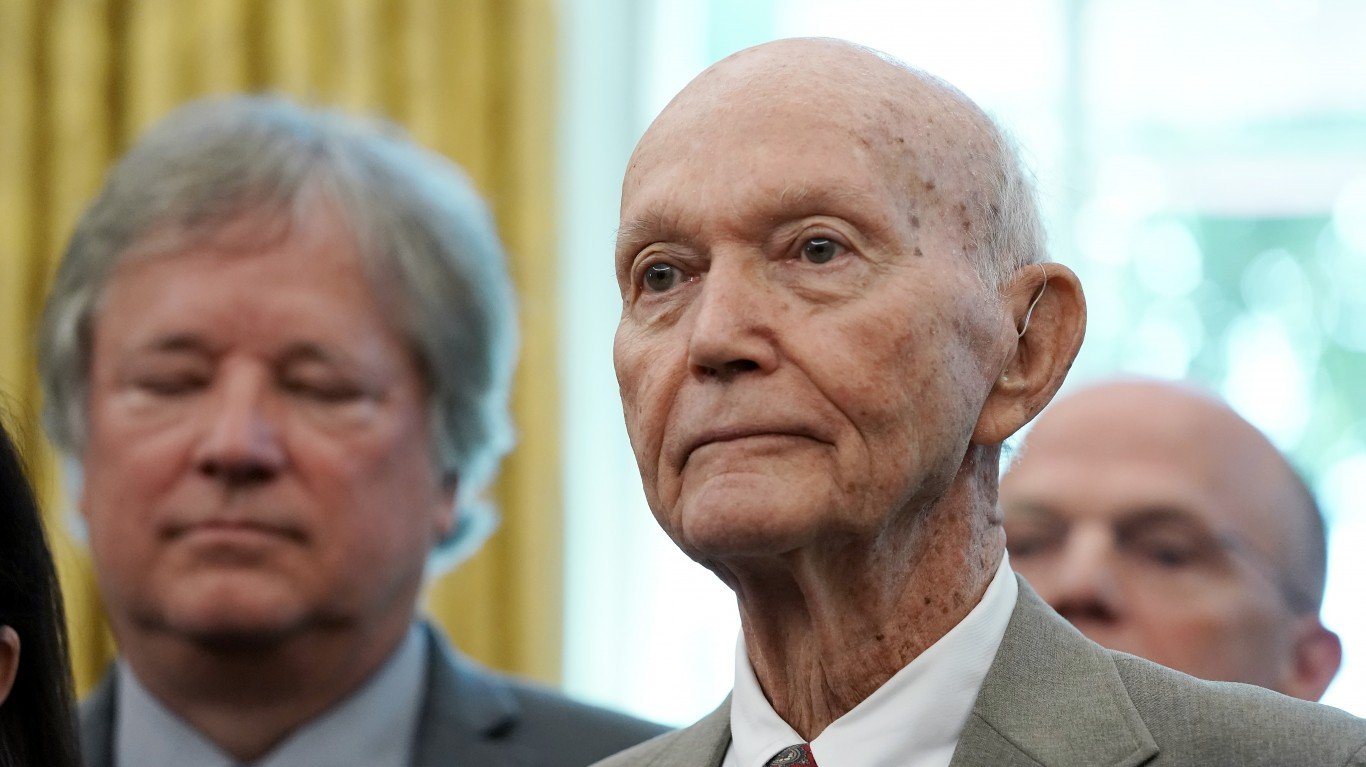
Michael Collins
> Class of: 1952
Michael Collins became the world’s most famous designated driver as the command module pilot of Apollo 11 while crew mates Neil Armstrong and Buzz Aldrin walked on the moon. Previous to the Apollo mission, Collins flew on Gemini 10 in 1966 with John W. Young and walked in space. In 1971, Collins became the first director of the National Air and Space Museum. Among the four books he’s authored are his account of the historic Apollo 11 mission, “Carrying the Fire,” and “Liftoff,” a history of the American space program.
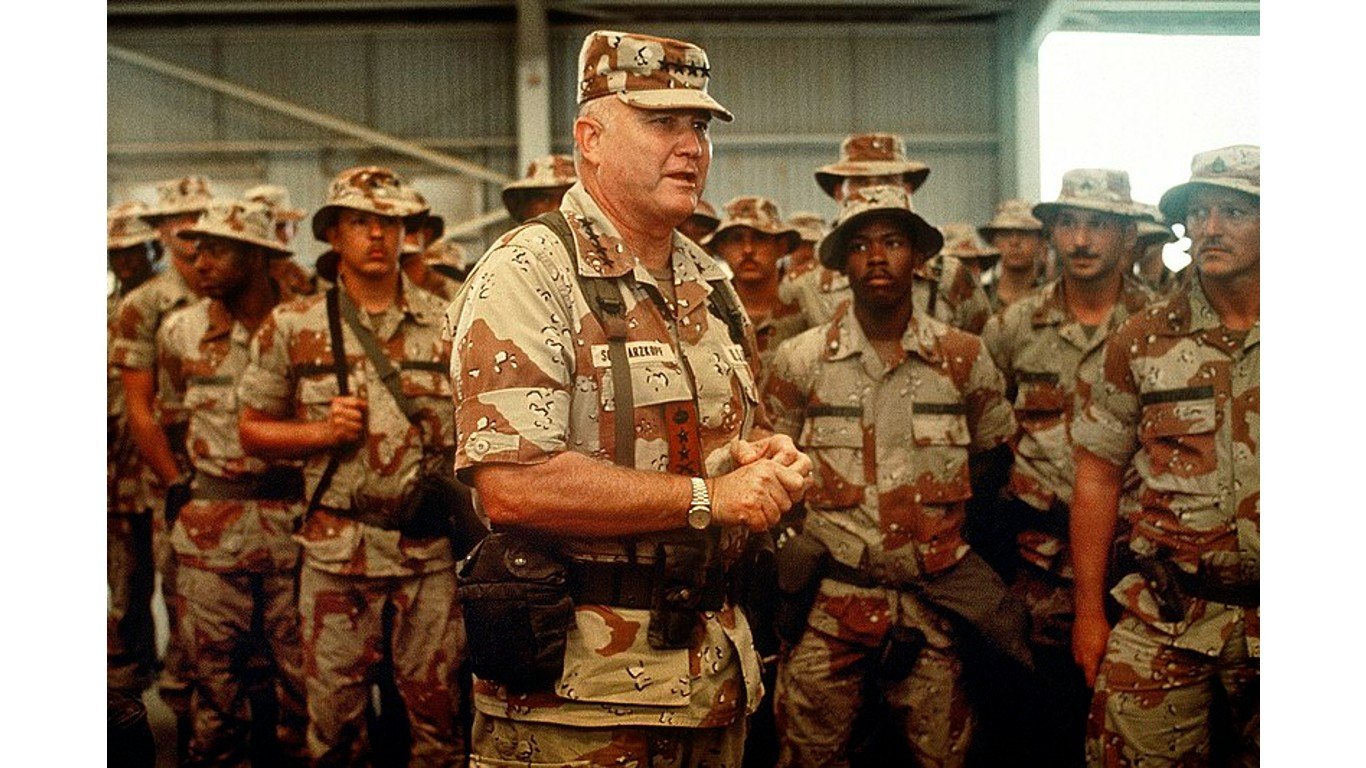
H. Norman Schwarzkopf
> Class of: 1956
H. Norman Schwarzkopf was Commander-in-Chief of the United States Central Command from 1988-91. After Iraq invaded Kuwait and seized its oil fields, Schwarzkopf commanded the largest U.S. deployment since the Vietnam War, about 541,000 servicemen and women. Along with coalition allies, about 765,000 troops liberated Kuwait in the Desert Storm operation. Schwarzkopf was the son of a West Point graduate who fought in both world wars. The younger Schwarzkopf served several tours in South Vietnam during the Vietnam War.

Kristin Baker
> Class of: 1990
Kristin Baker became the first woman captain of the U.S. Corps of Cadets. Baker was tasked with supervising 4,400 cadets, 90% of whom are men. West Point accepted its first female cadets in 1976. Baker, who described herself an Army brat, is the daughter of an Army colonel.
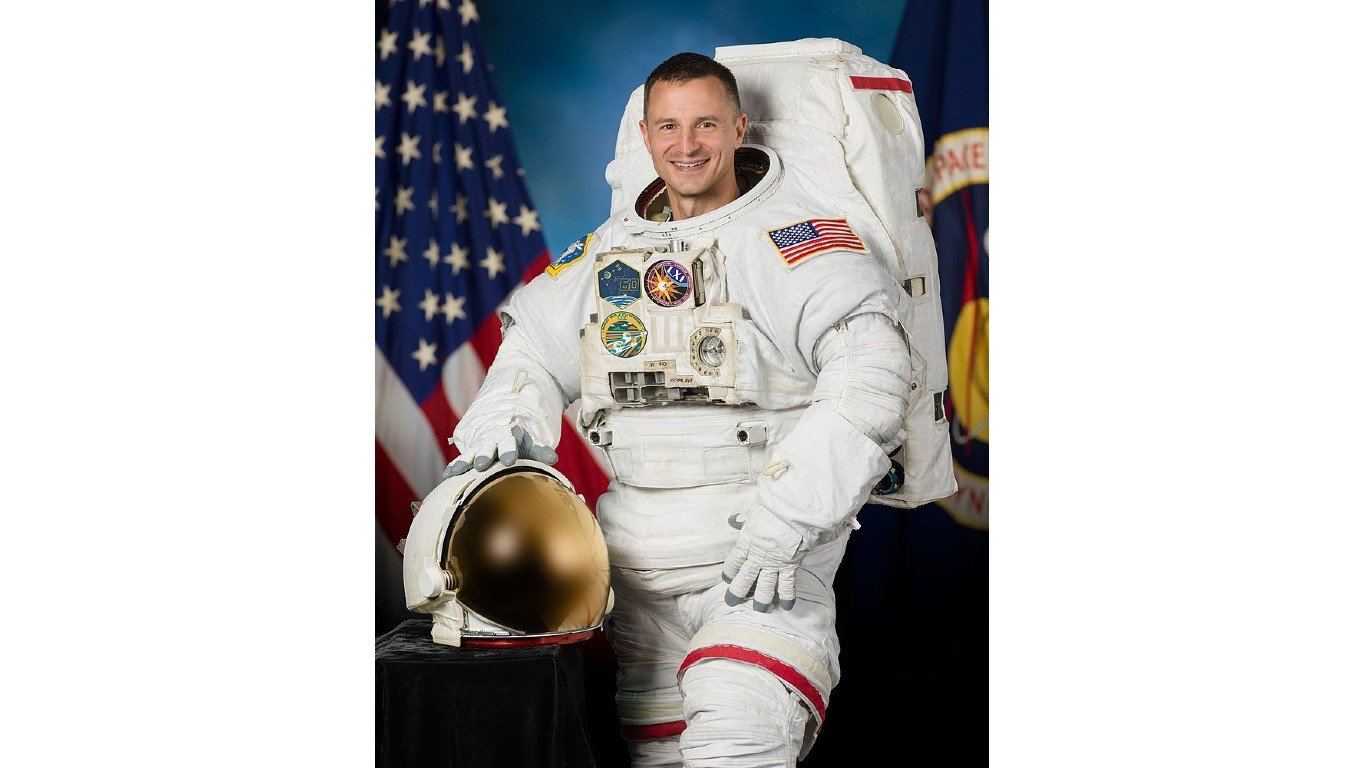
Andrew R. Morgan
> Class of: 1998
Andrew R. Morgan became an astronaut in 2013. Morgan was the first Army doctor and Special Forces officer to go into space. He served as a flight engineer on the International Space Station for Expedition 60, 61, and 62 and made seven spacewalks. Back on Earth, Morgan has been deployed in combat operations in Afghanistan, Iraq, and Africa.

